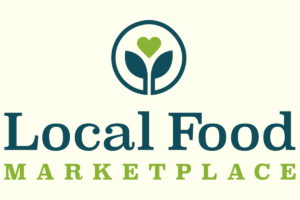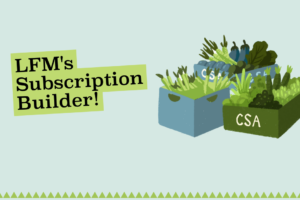Right now, many farms and markets are wondering what to expect for 2021 after experiencing rapid growth in 2020. In particular, many are wondering (worrying, even) whether the growth will be sustained and in particular, whether they can retain their new customers. These concerns are understandable – as often sudden growth can be fleeting and temporary. There are some ways to predict how much of the growth one can expect to retain – primarily by looking at how similar the buying behavior of new customers are to your typical pre-COVID customer. There are many ways to measure this, but a good starting point are the basics:
- How many customers purchased just once, never to place an order again and how does that compare to previous years?
- What was the average order frequency, compared to previous years? Meaning, how often did customers place an order? We recommend calculating this in terms of weeks and to look at order frequency for all customers, as well as repeat buyer order frequency.
- What is your average order size, compared to previous years?
We analyzed the data in aggregate for all LFM customers using our platform in 2019 and 2020 to see how they fared. Please note this is aggregate data across markets in 45 states, 6 Canadian Provinces, and 5,200 farms – selling into multiple channels – wholesale, retail, and direct to consumer.
Here is what we found:
Average order size: 1.4% decrease ($132.80 in 2019 vs $131.02 in 2020)
Order frequency for all customers: Reduced by 2 weeks
Repeat buyer order frequency: Reduced by 0.5 weeks
One-time buyers: 6% increase
Sales growth: 50.1% increase
Number of buyers: 131% increase
Our aggregate analysis:
With the significant shift to direct-to-consumer sales, we expected order frequency to shift down and the number of one-time buyers to increase. Because the data includes wholesale and retail orders together, it is not a perfect comparison, but the results are stronger than we expected. The main takeaway being that, in aggregate, LFM customers seem to be attracting a similar buyer profile between 2019 and 2020 and the pandemic provided an opportunity to attract new buyers at a faster rate than they would normally.
Although you may reach different conclusions based on your own sales and unique circumstances, there are some important takeaways:
- Retention may have decreased, but – depending on the way you measure it – it may not be as significant as you think.
- It is much more achievable (and less costly) to focus on increasing the order frequency (or order size) for those that already buy from you. If LFM customers can match the 2019 order frequency with the same number of 2020 repeat buyers in 2021, they stand to grow 35% in 2021…without adding a single new customer.
- Increasing average order size can be the easiest.
In marketing terms, Average Order Size, Average Purchase Frequency and Retention Period make up Lifetime Customer Value, which offer a more accurate picture of profitability and long-term success than purely retention. Local Food Marketplace provides in-depth reporting and exportable data to make it easy for you to access all of this information and more. Depending on what part of the equation you see the best opportunity for your business, here are some suggestions:

Average Order Size:
- Freshen up your storefront regularly so customers see new, featured items.
- Communicate – through all of your channels – email, social media, etc. to highlight products, offer recipes, and more.
- Curate your storefront. Decision fatigue is real. Depending on your buyer profile, 50-100 highly curated items often results in higher order sizes than offering hundreds of products.
- Expand your offerings. If you offer a narrow range of items, offering products in several categories will help increase order size.
- Ensure you have adequate supply of popular items.
Learn how to increase Average Order Size with LFM’s free guide
Get the GuideIncrease Purchase Frequency:
- Subscriptions and standing orders make it easy for busy customers to ensure they get an order from you regularly.
- Communicate – again, regular, consistent communication is key to ensure customers order from you. They need reminders to order and usually more than one, and reminders to confirm abandoned carts.
Measure & Adjust:
- Depending on the areas you decide to focus on, don’t wait to measure your results at the end of 2021. This will enable you to tweak your approach and test out different ideas. We recommend a simple monthly report showing metrics related to your goals.
- Making small adjustments over time will make it easier to course correct and know when something new is working.
Although we are in a time of lots of unknowns, farms and markets as a whole should trust in the brand they’ve built that has attracted these new customers. Take time to analyze the data and focus on customer lifetime value rather than just retention. When you are selling online or using a software platform, it is essential to be able to access and utilize your data for such analysis. Local Food Marketplace provides in-depth reporting features and fully exportable data, so that you can easily and accurately grow your business.




